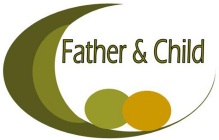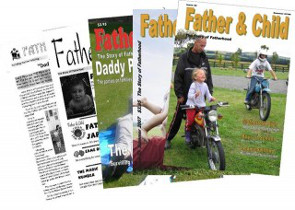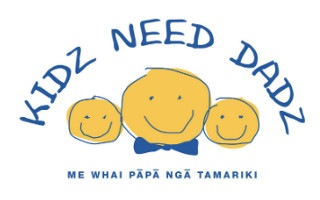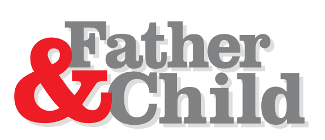In Praise Of Cloth Nappies
For any parent with very young ones at home, nappies is an integral part of everyday. The advent of disposable nappies has made a huge impact on the baby landscape. Mark Nixon, with three under six years of age, writes glowingly about the good old fashioned cloth version.
There is something romantic about cloth nappies. The feeling of baby in the back-pack, the frosty breath of winter, warm rays of sunshine, the crack of a wet nappy being straightened, those magical yellow stains that disappear in the sun, a row of white flapping nappies hung out to dry.
As I gather up child number 3’s nappies from the line, bury my face in their crisp freshness, I think of my mother (hell, I can’t imagine it being my father) bringing in my nappies as her mother (and certainly, not my grandfather) would have done before her. There really is something romantic about cloth nappies.
I am not always so infatuated with cloth nappies. There are ‘nappy disasters’ with leakages, overflows and complete blow-outs. The argument in favour of cloth nappies has been well-documented with the scales well tipped in favour of cloths from an environmental, health and cost basis. Convenience is the counter-balance which we all have to place our own personal weight on.
For those of us who are discovered to be users of cloth nappies, the reaction usually stops with a somewhat embarrassed, congratulatory pat on the back accompanied with an “are-you-crazy” look.
Seldom is heard the rest of the cloth story, such as how do we wash them? Indeed, how we wash dirty nappies seems to be culturally rather than scientifically derived. At risk of washing my dirty laundry in public, here is my experience in nappy land.
With the birth of our first baby, we started on the cloth adventure. While one anxious first-time parent tried to hold flailing legs and nappy in place, another, armed with pin, tried to spear the cloth without wounding offspring or spouse. The performance was hard on both nerves and thumb (mine).
Our attempts at baby-wrestling-while-attempting-the-pinless-nappy-origami were equally fraught.
At last we discovered the answer to our prayers – and at risk of sounding like an advertisement – Weenees.
Weenees, for those of you who are not familiar, are a nappy wrap shaped like a disposable nappy with a cloth nappy folded as an insert.
Through the use of Velcro, no thumb-seeking safety pins are needed and changing is as fast as with a disposable nappy. Another option is the New Zealand made ‘Down-undies’, although I haven’t tried them myself.
 The downside of Weenees is cost; they retail at around $20 each. We initially survived on two Weenees, and later discovered that good condition secondhand Weenees can be found in Op shops for typically 50 cents each – ah the intentions of good intent becomes the reward of the Weenee-searching Op-shopper. They come in three sizes; newborn, 0-2 years, and 2 years-4 years.
The downside of Weenees is cost; they retail at around $20 each. We initially survived on two Weenees, and later discovered that good condition secondhand Weenees can be found in Op shops for typically 50 cents each – ah the intentions of good intent becomes the reward of the Weenee-searching Op-shopper. They come in three sizes; newborn, 0-2 years, and 2 years-4 years.
The newborn size fits babes less than 6 weeks old so if you are buying them full price I would recommend going straight to the size 0-2 years and living with the resultant increase in leakage from around the leg for awhile. To decrease the leakage risk, use cloth nappies which have been cut into two prior to folding or a muslin wad.
Weenees have a disadvantage in that they do not seem to be able to contain a night’s worth of wees. I admit that we are night-time disposable nappy users for this reason. As a baby I apparently wore pilchers, either knitted woollens or ‘fluffy-bums’ and a double layer of cloth nappies – a system that my children’s grandmother swears by, and very few moist mattresses apparently.
And it doesn’t need to stop at nappies.
Three children and much thinner nappies later, I can honestly say I’ve never used a baby wipe in my life. (For child number 2 we got given a box of ultra sensitive, super thick, aloe vera impregnated, gently cleansing baby wipes and I was at a complete loss to know what to do with them.
Thank goodness for Trade Me!) A family friend, of my grandmother’s generation, made a set of ‘bum wipes’ for us. These are double layers of old flannelette sheeting sewn into squares and are a simple, low-cost and green alternative to commercial nappy wipes. Baby’s bottom is easily cleaned with a damp ‘bum wipe’ before it is tossed into the nappy bucket.
Another alternative is to recycle worn-out towels with bias binding trim.
Many people believe that disposable nappies help prevent nappy rash. However, research has found that as long as they are changed frequently, the type of nappy bears no relation to the incidence of nappy rash. The rash can be caused by several things: lack of air circulation to the tender skin of the bottom, soap, chemical or food allergies. The cure and prevention are the same; sunshine, fresh air – with or without zinc and castor oil.
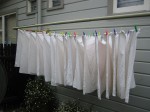 Washing cloth nappies can be tackled in many different ways. The ‘textbooks’ suggest washing nappies in hot water after soaking overnight in a chemical concoction. What a load of nonsense! To my mind ‘dilution is the solution to pollution’ – no need for a chemical concoctions when UV radiation from the sun does a great job – both as a whitener and an antiseptic agent.
Washing cloth nappies can be tackled in many different ways. The ‘textbooks’ suggest washing nappies in hot water after soaking overnight in a chemical concoction. What a load of nonsense! To my mind ‘dilution is the solution to pollution’ – no need for a chemical concoctions when UV radiation from the sun does a great job – both as a whitener and an antiseptic agent.
Thus I don’t use any soaking agents. Napisan, Milton, etc, contain bleaches and therefore shorten a nappy’s lifespan as well as being a harsh on the environment and baby’s bottom. I admit that initially I was a victim of the I-must-soak-them-in-something mentality, and used a few drops of anti-bacterial tea tree oil. But after a while, even that was dismissed with.
For breastfed babies, before solids are introduced (ie delightful finger-paintable “poo”), I just put the nappy into the nappy bucket. We tried soaking in the pail but it just seemed to create more odour and mess and as long as a lid is kept on the bucket the smell is minimal.
When we are ready to wash, the nappies are just dumped into the washing machine on a quick rinse and spin cycle before proceeding to the actual washing. For older babies and toddlers, poo is just shaken into the toilet. If it is of a clinging consistency then a dedicated nappy scraping kitchen knife can be useful.
And then onto the line with them so they can bask under that great UV source in the sky. I remember before the birth of our first child: “now you’ll just need to get yourself a clothes drier…”. Another terrible myth. The thing about nappies is that dry so quickly! And it’s not that in our temperate climate they freeze on the line or anything, at least not North of the Kilmogs (a very steep road north of Dunedin) at any rate.
Finally, it’s worth keeping in mind that the more you use cloth nappies, the less you need to change them. This seemingly contrary statement will have to be explained in hushed tones or I shall be cast out as some sort of heretic by the masses, and certainly by the disposable nappy magnates.
The fact of the matter is, as a dedicated cloth nappy user, there is a certain motivation to keep them clean, right? While I was a late starter with number 1, got going a bit with number 2, I feel I’m now coming a pro at it with number 3. That is, it’s not too difficult to keep nappies dry all day. Some people call it “holding over”, but I don’t like this term as it gives a feeling of hovering.
I simply crouch backwards on the toilet with my nappy-less baby or toddler in front while he or she does wees or poos. For number 3, who is 13 months old now, I do this within 30 minutes of morning waking and following afternoon sleep, and then once or twice later in the morning and late afternoon, whenever I sense he has an urge – it’s just something you get used to. Well that’s the wees sorted out.
With poos – well, the cross eyed look gives it away. I have to say with number 3 he’s probably only had one or two pooy nappies since he was three months of age. It’s funny that some people say that’s impossible (“the reflexes aren’t developed yet”), but whether the reflexes be voluntary or involuntary, I can’t see any harm in using them.
I became aware of a benefit of all this when a worried-friend-with-a-two-year-old asked me how I toilet trained my children. While I’m sure that this is another story completely, I realised that I had no idea at all! It appears to me that “toilet training” is really “toilet un-training” – typically you’ve been outrightly encouraging your child for at least a couple of years to wee and poo in its pants. Right? Well, that’s just asking for trouble as far as I can see.
So don’t come running to me complaining that your two year old is refusing to poo in the toilet! In contrast, through cutting out the step that weeing or pooing in one’s pants is desirable in the first place, by following a cloth nappy life style with a see-how-long-we-can-keep-them-dry attitude has represented a smooth, gentle (for all parties) continuum towards a toilet trained child.
But that was just an aside. In short, being a successful cloth nappy household does require buy-in from your partner (preferably to the extent of significant enthusiasm, especially if you’re not the one that’s staying at home!!), systems in place (bucket with lid, scrapping knife), and sticking with it long enough until it becomes habit.
But once it does, it is all rather simple, has unexpected benefits, and you can feel pleased that your environmental footprint that you’ll leaving behind on the planet is a lot less than it otherwise would have been.
Next: So Close… Yet So Far
